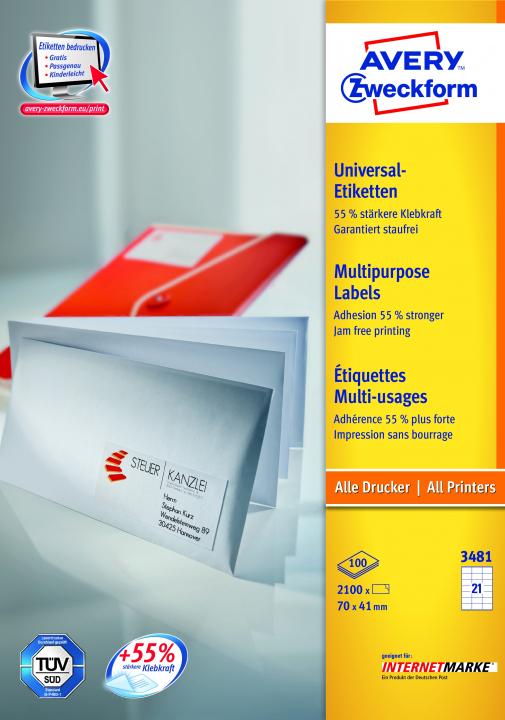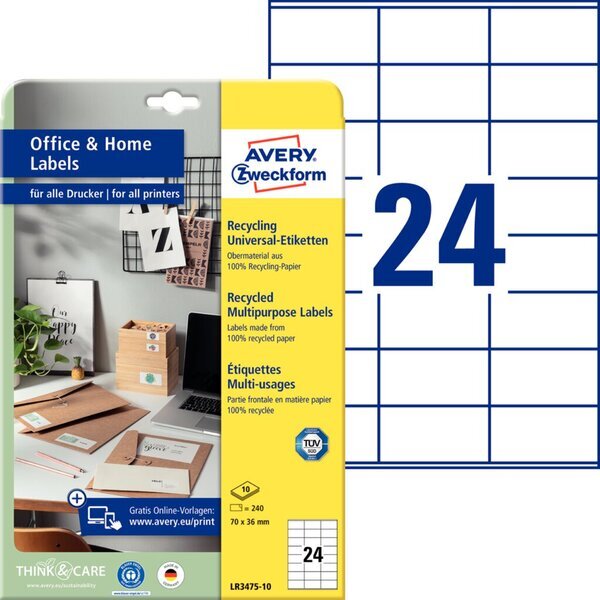
Avery-Zweckform L4716-20 Etiketten Ø 30 mm Polyester-Folie Weiß 960 St. Permanent Wetterfeste Etiketten, Markierungspunk - Conrad Electronic Schweiz

Avery Zweckform L7120-25 QR Code Etiketten, 35 x 35 mm, 25 Bogen/875 Etiketten, weiß > Korrektur - und Abdeck-Etiketten > ENDISCH-ETIKETTEN

AVERY Zweckform 4780 Universal Etiketten (1.000 plus 200 Klebeetiketten extra, 48,5x25,4mm auf A4, Papier matt, individuell bedruckbar, selbstklebende Aufkleber mit ultragrip) 30 Blatt, weiß : Amazon.de: Bürobedarf & Schreibwaren

Amazon.com: AVERY Zweckform 524 Sticker for Children (Boys, Children's Stickers, Football, Tractor, Pirates, Cars, Police and Fire Brigade, Building Site, Children's Birthday Parties, Party Bags) 59991 : Toys & Games

Amazon.com : AVERY Zweckform L6013-8 Name Plate Foil Labels (210 x 297 mm on DIN A4, Extremely Strong Self-Adhesive, Weatherproof Printable Adhesive Film) 8 Stickers on 8 Sheets Silver : Office Products

Avery Zweckform 3481 Universal-Etiketten 70 x 41 mm, | Paper Markt Büroartikel, Schulbedarf & Bürobedarf







:strip_icc():strip_exif()/images/original/AVERY-ZWECKFORM-3655-10-4004182617588.jpg)

